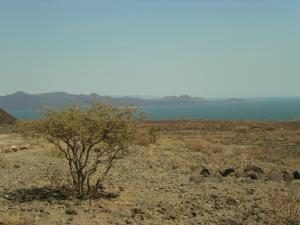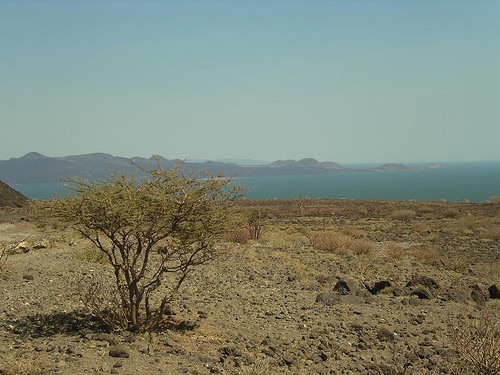
UNIVERSITY OF UTAH—The shores of Lake Turkana, in Kenya, are dry and inhospitable, with grasses as the dominant plant type. It hasn’t always been that way. Over the last four million years, the Omo-Turkana basin has seen a range of climates and ecosystems, and has also seen significant steps in human evolution. Scientists previously thought that long-term drying of the climate contributed to the growth of grasslands in the area and the rise of large herbivores, which in turn may have shaped how humans developed. It’s tough to prove that hypothesis, however, because of the difficulty of reconstructing four million years of climate data.
Researchers from the University of Utah have found a better way. By analyzing isotopes of oxygen preserved in herbivore teeth and tusks, they can quantify the aridity of the region and compare it to indicators of plant type and herbivore diet. The results, published in a study issued through the Proceedings of the National Academy of Sciences (PNAS) show that, unexpectedly, no long-term drying trend was associated with the expansion of grasses and grazing herbivores. Instead, variability in climate events, such as rainfall timing, and interactions between plants and animals may have had more influence on our ancestors’ environment. This shows that the expansion of grasslands isn’t solely due to drought, but more complex climate factors are at work, both for modern Africans now and ancient Africans in the Pleistocene.
______________________________________
A view of the Lake Turkana environment as it exists today. AdamPG, Wikimedia Commons
___________________________________________________
Article Source: University of Utah news release
______________________________________
Receive 30 days free access to the popular new CuriosityStream lineup of documentaries on science, history, nature, and technology as a new Popular Archaeology premium subscriber.
___________________________________________
Travel and learn with Far Horizons.
____________________________________________
This richly illustrated issue includes the following stories: Recent findings shedding new light on the whereabouts of the remains of Philip of Macedon, father of Alexander the Great; how an archaeologist-sculptor is bringing bones of the dead back to life; archaeologists uncovering town life at the dawn of civilization; an exclusive interview with internationally acclaimed archaeologist James M. Adovasio about what makes the Meadowcroft Rockshelter prominent in the ongoing search for the first Americans; what archaeologists are finding at the site of the ancient city of Gath, the home town of the biblical Philistine giant, Goliath; and how scientists are redrawing the picture of human evolution in Europe. Find it on Amazon.com.





